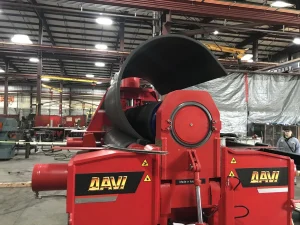Understanding the Essentials of Agriculture Law for Modern Farmers
Introduction to Agriculture Law
Agriculture law encompasses a broad spectrum of legal issues affecting the agricultural industry. From land ownership to environmental regulations, it plays a crucial role within the framework of food production and distribution. Understanding agriculture law is vital for farmers, agribusinesses, and stakeholders to navigate the complexities of legal compliance, risk management, and dispute resolution. In this article, we will delve deep into the essentials of agriculture law, including its definitions, types of regulations, key stakeholders, and more. Moreover, we will explore practical insights, trends, and future considerations for those engaged in the agricultural sector.
The importance of understanding agriculture law cannot be understated, as it governs numerous aspects of farming operations, including land use, employee rights, and environmental responsibilities.
Definition and Importance of Agriculture Law
Agriculture law is a specialized area of law focusing on the legal aspects relevant to agricultural practices. This includes regulations related to land use, crop production, livestock farming, food safety, labor laws, and environmental protection. The agricultural sector is vital to economies worldwide, and laws governing this industry ensure that it operates within ethical and sustainable boundaries.
The significance of agriculture law is multifaceted; it guides how businesses manage land, comply with federal and state regulations, resolve disputes, and adapt to evolving market demands. With global challenges such as climate change and food security, effective agricultural practices supported by robust legal frameworks are essential for the long-term sustainability of the sector.
Types of Agriculture Law Regulations
Agriculture law is divided into several categories that each address specific facets of agricultural practices:
- Land Use Regulations: These laws govern how agricultural land can be used, including zoning laws that dictate if land can be utilized for farming, residential development, or commercial enterprises.
- Environmental Regulations: Farmers must comply with regulations that protect the environment, such as the Clean Water Act and the Clean Air Act, which focus on reducing pollution and conserving natural resources.
- Food Safety Regulations: Laws that dictate how food is produced, handled, and processed to ensure public health and safety, including guidelines established by the Food and Drug Administration (FDA) and the United States Department of Agriculture (USDA).
- Labor and Employment Laws: The agricultural workforce is subject to various legal protections surrounding working conditions, wages, and rights, governed by laws such as the Fair Labor Standards Act (FLSA).
- Contract Law: Farmers often enter contracts for the sale of produce, agricultural services, and equipment, necessitating a solid understanding of contractual obligations and rights.
Key Stakeholders in Agriculture Law
Understanding the various stakeholders involved in agriculture law is vital for anyone operating within this domain. Key stakeholders include:
- Farmers and Producers: The primary players in agriculture law, responsible for producing food and other agricultural products.
- Government Agencies: Local, state, and federal agencies enforce agricultural laws, provide resources, and guide compliance processes.
- Agricultural Businesses: This includes suppliers, processors, and distributors that play critical roles in the agricultural supply chain.
- Consumers: As end-users of agricultural products, consumers are impacted by regulations regarding food safety and quality.
- Environmental Groups: Advocates for sustainable practices and conservation often work to influence regulations that impact agricultural operations.
Fundamental Principles of Agriculture Law
Land Use and Property Rights in Agriculture Law
The relationship between land use and property rights is foundational in agriculture law. Property rights determine who can utilize the land and for what purpose. Land use regulations often vary significantly depending on local laws and zoning requirements. Common principles include:
- Ownership Rights: Farmers must understand their rights as landowners, which may include issues related to inheritance, occupancy, and land improvement rights.
- Zoning Laws: These laws dictate how land can be used, and compliance is necessary for farmers wishing to operate legally.
- Easements: Landowners may grant easements to allow others to utilize a portion of their land for specific uses, often impacting agricultural operations.
Environmental Regulations Impacting Agriculture Law
Environmental regulations are designed to protect natural resources while allowing agricultural activities to thrive. Farmers must adhere to laws that promote responsible use of land and resources:
- Water Quality Regulations: Laws that ensure the protection of surface and groundwater from agricultural runoff and pollutants.
- Soil Conservation: Techniques and regulations aimed at preventing soil erosion and maintaining soil health are critical for sustainable agriculture.
- Wildlife Protection: Farmers must understand their obligations regarding wildlife habitats and endangered species when managing land.
Contract Law Essentials in Agriculture Law
Contracts are integral in agriculture, as they define relationships between producers, suppliers, buyers, and service providers. Essential aspects of contract law in agriculture include:
- Contract Formation: A valid contract requires an offer, acceptance, consideration, and the legal capacity of parties to engage in a contract. Understanding how these elements apply in agriculture-specific contexts is critical.
- Types of Contracts: Agreements can range from simple sales contracts to complex partnerships and joint ventures.
- Dispute Resolution: Contracts should include provisions outlining how disputes will be handled, further emphasizing the importance of clarity in contractual agreements.
Navigating Compliance in Agriculture Law
Regulatory Bodies and Their Roles
Numerous regulatory bodies oversee compliance within agriculture law. Understanding their roles helps ensure that agricultural operations adhere to relevant laws:
- United States Department of Agriculture (USDA): Oversees farming, agricultural practices, and food safety standards.
- Environmental Protection Agency (EPA): Responsible for enforcing environmental regulations that impact agriculture.
- State Agricultural Departments: Each state has agencies dedicated to supporting local farmers and implementing state-specific agricultural legislation.
Understanding the Compliance Process
Compliance with agriculture law requires farmers to engage with various regulations and processes:
- Research Relevant Laws: Farmers must familiarize themselves with both federal and state laws that impact their operations.
- Implement Best Practices: Compliance often involves adopting best practices for sustainable farming, record-keeping, and safety protocol.
- Regular Audits: Conducting self-audits or collaborating with experts can help ensure ongoing compliance with changing regulations.
Common Compliance Pitfalls in Agriculture Law
Many farmers may encounter challenges that hinder compliance:
- Failure to Keep Accurate Records: Inadequate documentation can lead to regulatory violations, making record-keeping essential.
- Neglecting Environmental Responsibilities: Non-compliance with environmental regulations can incur fines and harm reputation.
- Inadequate Training: Staff should be knowledgeable about compliance practices to minimize risks of violations.
Dispute Resolution in Agriculture Law
Types of Disputes in Agriculture Law
Within agriculture, various types of disputes can arise, including:
- Land Use Disputes: Conflicts over property lines, easements, or zoning regulations often necessitate legal intervention.
- Contract Disputes: Breaches of contract, disagreements over terms, or failure to fulfill obligations can lead to litigation.
- Environmental Compliance Disputes: Conflicts with regulatory bodies over compliance with environmental laws can arise.
Mediation and Arbitration Options
Alternative dispute resolution methods such as mediation and arbitration can provide effective ways to settle disputes in agriculture law:
- Mediation: A neutral third-party facilitates discussions to help parties reach a mutually acceptable resolution.
- Arbitration: A binding resolution is reached by an arbitrator, providing a quicker alternative to litigation.
Litigation Strategies for Agriculture Law Cases
Sometimes, disputes may lead to litigation. Effective litigation strategies involve the following:
- Thorough Preparation: Gathering evidence, understanding applicable laws, and preparing a solid legal argument are critical.
- Expert Testimony: In complex agricultural matters, expert witnesses can provide valuable insights that support claims.
- Negotiation: Prior to litigation, negotiating settlements can often mitigate costs and time involved in court proceedings.
The Future of Agriculture Law
Emerging Trends in Agriculture Law
The landscape of agriculture law is continually evolving. Key trends include:
- Sustainability Regulations: Increasing pressure to adopt sustainable farming practices is leading to new regulations that promote environmental responsibility.
- Precision Agriculture: The use of technology in farming is creating legal questions regarding data ownership and privacy.
- Global Trade Issues: International trade agreements are impacting agricultural law and practices, requiring adaptability from farmers.
Technological Advances and Agriculture Law
Technology is transforming the agricultural sector, introducing both opportunities and challenges for compliance and regulation:
- Data Management: With the rise of precision agriculture, managing and legally owning data captured by tech tools is a growing concern.
- Automation and Labor Laws: As automation increases, farmers must navigate the evolving labor regulations concerning employee rights and robotics.
- Intellectual Property: Innovations in plant breeding and biotechnology are raising questions about patents and trade secrets in agriculture.
Preparing for Changes in Agriculture Law
As agricultural practices evolve, so must the legal frameworks governing them. Farms and agricultural businesses should prepare for upcoming changes by:
- Staying Informed: Regularly reviewing changes in laws and regulations ensures businesses remain compliant.
- Investing in Education: Training staff on legal updates and compliance best practices can minimize risks.
- Engaging Legal Experts: Establishing a relationship with agricultural law specialists can provide guidance and support when navigating complex legal landscapes.














Post Comment